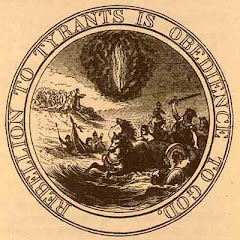I know it's old news now, but it's a good reason to remind ourselves all about how important it is to gather data before jumping to conclusions. I'll go into lab this week and once again reinforce the importance of gathering as much data as we can before we really know what we have, because there are two major problems with facts, data, and evidence. First off, you rarely, if ever, gather every bit of information that is true, meaning that we rarely if ever understand anything completely. Secondly, sometimes the data you acquire is wrong either outright lies or because it's in the wrong context, meaning that any conclusions you draw from it will likewise propagate those flaws. Last week, the internet exploded over the grinning teenager who stood down a drumming Shawnee Indian on the steps of the Lincoln Memorial, and people jumped up to take sides. I guess everyone wants to be first rather than be correct. I guess people want to know who is right instead of what is right. I guess we never learn, and so this advertisement from the UK Guardian is as prescient as ever:
I know that our media is biased. I read the Guardian and the Telegraph when I want to know about what's going on in America. I know that these two periodicals are too, but I know that since they are from the UK they are biased to not sugar coat anything that happens in America, and so I learn things about what happens here that I don't learn from the alphabet soup of media in this nation. I also know that even the Guardian doesn't show all angles. It turns out that this "menacing" kid was actually approached by the Indian, and if you watch the video of their interaction, you can see that the kid, while grinning awkwardly, is actually not that sure, since he blinks in fearful anticipation with each strike of the mallet against the drum. It turns out that the "noble" Indian is actually a known rabble rouser. They really should find someone more nondescript to trot out because this guy sticks out like a sore thumb. Investigation of his story shows lots of holes. The kid? Not so much. The more we learn, the less we see that the kid is the problem, just like the skinhead in the Guardian commercial.
People like to be able to judge quickly and be correct. We like to attach demographics to people so that we don't have to get to know them better. Earlier today I was complaining about a certain VWR employee who was condescending towards me and mentioned that he sounded by his name that he originated from the Indian subcontinent, and someone listening said, "well that explains it all." It does not. I had a good friend from Sri Lanka in High School who was awesome. There are good people everywhere and bad people everywhere. Stereotypes and generalizations may usually fit, but they don't always fit. There is an exception to every rule except for this one. People are people,, but we are all unique.
Two weeks ago in Sunday School, I talked with my class about the conversion of coal to diamonds. The reason why natural diamonds are considered valuable is not because they are particularly rare. I have several myself. I also have some that I created in lab, just because I wanted to prove I could do it. Lab created diamonds are worth less because they are ALL THE SAME. Natural diamonds are valuable because they are unique. The way they shine and the light they cast comes from the fact that although they share good structure they all contain different flaws in different places, just like every person. It's no coincidence in my opinion that we talk of good people sometimes as "diamonds in the rough". Every diamond has flaws, but as they are cut and cleared and faceted and polished, they shine, and each one shines differently, but all of them are brilliant. Only when we let the light refract through them at many angles can we truly see of what they are truly made and the goodness that is in each of them. I share CS Lewis' sentiment from his introduction to the Screwtape Letters: "I do not believe that if you take away all that is good in man that you are left with a bad man. I think you are left with nothing at all." Even graphite can be useful. At the very least it's non toxic. Cast in a certain light, when you cast a different light on things, you can tell which diamonds are lab created and which are unique. The light we use shows us whether they are truly diamonds or simple facsimiles, and our willingness to use different lights shows others the degree to which we are open to finding out the truth about someone we meet or an event presented by the media.
You may not notice the brilliance of a stone or a person unless you can learn to see them from all angles. You may not see the flaws of people either unless you cast them in unflattering light. The light you apply tells me much more about you than the light reveals about the person on whom you shine it. I once knew a woman who thought I was the bees knees. I think that she, for at least a time, could see the diamond deep in the rough of my soul. I think she saw what I could be if you were willing to reveal my other angles and look at me through them rather than through what is easy. Every person is flawed, and every person makes mistakes. If we assume at first glance that we know everything we will miss quite a bit. My Sunday School class did not recognize what uncut diamonds were, and none of them knew that diamonds and coal are the exact same material. I know that because I'm a chemist. I know that because I have learned and studied. As you look at other people, the following advice is something I try to apply, particularly once I become conscious of a negative bias towards a person or group: "When you cannot love someone, try to look for the hidden rudiments of the child of God in their eye" (F Enzio Busche). It's difficult betimes. It is however true. Whether rough diamonds or coal, we are all made of the same things, even if you don't like the other people who stand toe to toe with you. It takes time to get to know people. It takes a willingness to look at other angles. It requires us to see what they are made of because of not only what they do but why and how. Much of what you see is a play.






No comments:
Post a Comment